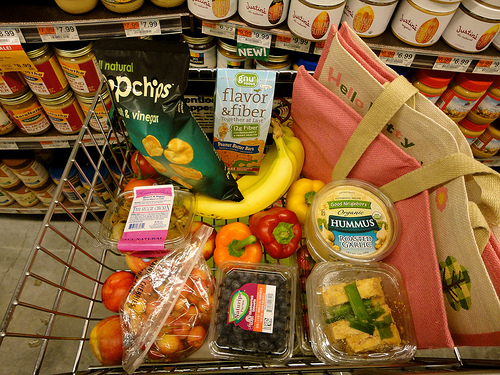Budget Family Shopping Tips: 6 ways to maximize your family’s monthly food budget
These days, just about everyone is looking for ways to tighten the budget and save money on necessities. A great deal of money can be trimmed from the monthly food budget by shopping smart and using creative approaches.

Coupon Clipping
Clipping coupons is generally the first thing people think of when they want to save money. Too often, coupons are for items that are higher priced than their competitors, even with the added discount. Furthermore, coupons sometimes tempt shoppers to buy things they wouldn’t have purchased otherwise. Coupons can be a way to lower one’s grocery bill, but they should be used with care.
Loyalty Program
A great alternative to searching through newspapers and flyers for coupons is signing up for grocery stores’ loyalty card programs. In addition to providing instant discounts at the register, these cards often track users’ frequent purchases and coupons are mailed to customers based on their purchases. Using these coupons ensures that shoppers are buying items they use regularly. Store coupons can feature incredible deals including offering some products free or BOGO – Buy one get one free.
Comparison Shopping
Learning to compare prices is important when choosing which stores to shop at for the items you need. Customers may find that one store offers excellent prices on produce while another has better deals on meat. It’s worth checking out several different stores but take into consideration the distance between the stores so it does not offset the savings! But careful shoppers must do more than simply glance at the price tag on an item. The important thing to note is how much one is getting for the price. For example, a 20-ounce box of cereal at $3 is a better deal than a 10-ounce box at $2. If the difference isn’t obvious, most shelf tags include a small print “unit price†which tells exactly how much per unit of measurement an item costs.
Substitution
Items that are less processed frequently cost far less. That means dried beans instead of canned, fresh produce instead of frozen and items for putting a meal together rather than frozen dinners. Many grocery stores offer bulk items in bins such as grains, cereals, nuts, spices, beans and much more. These are frequently much cheaper than the same items that are packaged or premade.
Lean to Cook
Buying fewer processed items won’t be much help to the shopper who can’t cook. Learning to cook from scratch is one of the best budget strategies. Complicated techniques aren’t needed. Most dried beans need to be soaked overnight, but they can sit on the stove and simmer for an hour or two with little attention. Vegetables can be steamed, roasted or quickly cooked in the microwave. Mastering a few easy techniques for cooking one’s favorite types of meat will pay off in huge savings.
Meal Planning
This is where a meal plan comes in handy. Most people have had the experience of stopping in the store for just an item or two and coming out with half a cart’s worth. This can be a budget-killing disaster. Making a meal plan and a grocery list is the best way to prevent impulse buys. A little flexibility can be good here; if a shopper notices a truly good deal on an item, it could be worth deviating from the list to take advantage of the savings. But this option should be exercised with caution.
Each of these tips will lead to big dents in the grocery bills for families of all sizes. Best of all, they will result in meals which are not only inexpensive but also nutritious and tasty!
Image Credit:
Jeremy loves writing about saving money through doing it yourself! He wrote this post on behalf of the home improvement resource and appliance parts retailer EasyApplianceParts.













